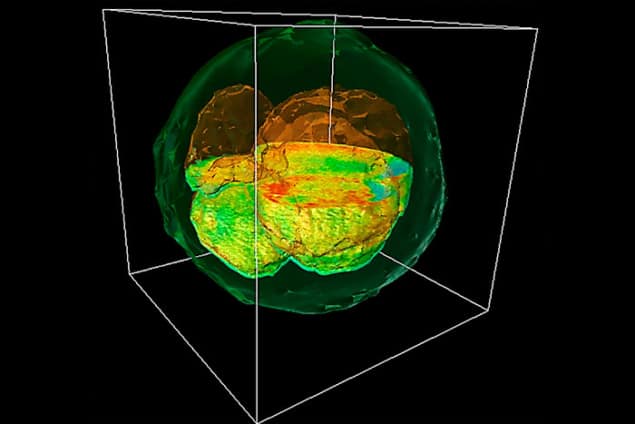
The internal structures of live cow embryos have been imaged in 3D by researchers at the University of Illinois at Urbana-Champaign in the US. The method developed by Gabriel Popescu and colleagues could allow scientists to determine the health of embryos before in vitro fertilization in humans.
Biomedical microscopy methods typically involve shining light through thin slices of tissue, or using chemical or physical markers that identify a specific object in a thick sample but can be toxic to living tissues. “When looking at thick samples with other methods, your image becomes washed out due to the light bouncing off of all surfaces in the sample,” says team member Mikhail Kandel.
Imaging the depths
Popescu and colleagues therefore developed a technique called gradient light interference microscopy (GLIM). The method uses two interfering light fields that are identical except for a small transverse spatial shift. By controlling the phase shift between the two waves, the researchers generate intensity images from multiple depths that can be put together to form a 3D representation of the sample.
GLIM – which can be added onto an inverted optical microscope – can probe both thin and thick specimens and the researchers used the technique to look at live embryos from cows. “This method lets us see the whole picture, like a 3D model of the entire embryo at one time,” says team member Tan Nguyen.
Educated guesses
At the moment, there is no universal, non-invasive technique for determining embryo viability for in vitro fertilization. An embryo is chosen based on “educated guesses” made by examining factors such as the colour of fluids in cells and development time. “One of the holy grails of embryology is finding a way to determine which embryos are most viable,” explains team member Matthew Wheeler.
But the researchers will have to wait to see if their technique has successfully analysed embryo health. “The ultimate test will be to prove that we have picked a healthy embryo and that it has gone on to develop a live calf,” explains Marcello Rubessa. The team hopes its research, published in Nature Communications, could help human fertility treatments in the future.



